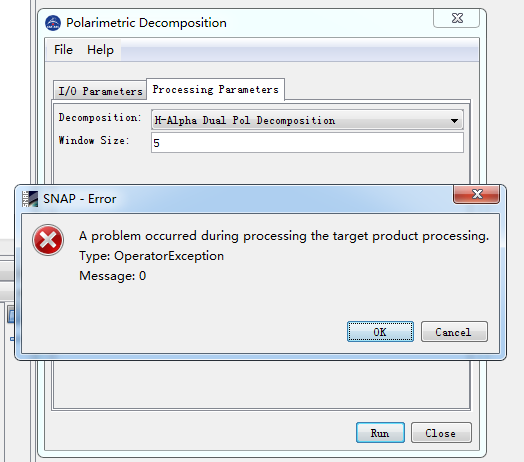Please have a look at the following post, I mentioned, what is sgma and sigma0
Intensity is well defined in the following ,
Source : https://crisp.nus.edu.sg/~research/tutorial/sar_int.htm
Please have a look at the following post, I mentioned, what is sgma and sigma0
Intensity is well defined in the following ,
Source : https://crisp.nus.edu.sg/~research/tutorial/sar_int.htm
That was very nice information  thanks. Now I have cleared majority of my doubt. I started implementing the graph using gpt but the problem is it is taking a lot of time to compute even I took subset. Is it usual or something wrong with graph??
thanks. Now I have cleared majority of my doubt. I started implementing the graph using gpt but the problem is it is taking a lot of time to compute even I took subset. Is it usual or something wrong with graph??
It depends on your GB and your machine, generally it should not take long time, one suggestions at the moment , don’t use the last graph you built, and create a new G. save the *.xml in different directory, use simple call by navigating to the directory where your data is available using command console and then call the gpt as this, “gpt mygraph.xml” and check up the results, let me know if it helps,
With all the help and typical tips, I performed the H-A decomposition. When I plotted the H-A plane I observed no surface scattering (low entropy low alpha) . My study area is some parts of Spain whose NDVI is varying from 0.2-0.6 (moderately vegetated). I cross checked with a region of THAR desert, there also a same curve was observed with no surface scattering mechanism. Any reason behind this??
(this is H-A plot for Spain region) (this is H-A plot for Thar region)I brought you some answers from the help of SNAP and from the STEP FORUM,
First take a look at the In H-A-Alpha decomposition calculations,
Second the eigenvalues of coherency plying an important role of the result,
most of the decompositions require 4 polarizations: HH, HV, VH and VV.
However, most of the Sentinel-1 data in IW mode is in only one or two polarizations:
So is it not possible to compute H-A decomposition for dual pol data? The post you referred was also facing the same problem with H-A decomposition. Is there any alternative we can use to compute H-A decomposition?
In the calculation of H-Alpha, there they mentioned eigenvectors u1, u2, u3. Do you know how to get this beta (orientation angle), gamma and delta(phase angles) used in the calculation of engine vector u. It will be a great help. I can code them separately then.
it is possible, but the outputs are not very good. I tried to explain it here: H-Alpha Plane Problems - #34 by ABraun
In the named example, HH/VV is used and the data was simply not suitable to represent all scattering mechanisms. So VV/VH has even less information because it lacks horizontally transmitted signals.
Source : Analysis of circular polarization backscattering and target decomposition using gb-sar, https://www.researchgate.net/publication/315959521_Analysis_of_circular_polarization_backscattering_and_target_decomposition_using_gb-sar
Also following you could find good example,
Source : Scattering Mechanisms and Within-Field Variation, https://www.nrcan.gc.ca/earth-sciences/geomatics/satellite-imagery-air-photos/satellite-imagery-products/educational-resources/9585
Since sentinel-1 is monostatic as mention here Sentinel-1 : Monostatic or Bistatic? , VH and HV should not matter right? Also in my case nothing is coming as surface scattering even for a desert area 
I even didn’t get how to compute beta(i), gamma(i), delta(i). Can we compute using SNAP?
Sorry I don’t know how to calculate it in SNAP, but I found the above mentioned article for you,
But in SNAP, the only orientation angle θ could be calculated,
Hello there,
I’ve attempted this with but the merge won’t accept H-alpha input. Am I doing this wholly wrong?
Hi there,
Have you managed to re-merge the sub-swaths after the polarimetric decomposition? I’ve tried with TOPS Merge but it doesn’t accept H-a inputs.
How can I solve this problem? I also encountered this problem, thank you.
Please describe your data and the steps you applied to it.
I am using Sentinel-1SLC data.Specific steps include TopSAR-Split、Apply-Oribit-File、Calibration、TOPSAR-Deburst、TOPSAR-Merge、Multilook、Speckle-Filter、Polarimetric-Decomposition。When I perform a polarization decomposition operation, an error occurs.
Tow things might be solve the problem, the first one upgrade and update SNAP to the last version and update SNAP 7, AND SentinelToolBox 7.0.2
The other thing, is, increase the amount of memory,
Please take a look at the following post,
Have you selected “complex output” in the Calibration step?
I would also skip Multi Looking and Speckle Filtering, you can do this afterwards.
Thank you, I have already solved it.
Thank you, I chose the complex output in the step of radiation calibration, and then I can perform it.